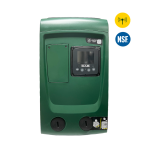This is a demo store. No orders will be fulfilled.
Serina Casey
- - May 26, 2025 - 3 min read 236
Chlorine vs. Chloramine: A Tale Of Two Chemistries
Source: Swan Analytical USA
In drinking water treatment’s ongoing battle between disinfection and disinfection byproducts (DBPs), most water utility customers are oblivious to the process. One thing they do notice, however, is when their water smells or tastes bad. Here are some insights that can help water treatment plant (WTP) operators deal with their internal concerns about DBPs and residual chlorine or ammonia levels, as well as their external concerns about customer perceptions of water quality.
Choosing Between Two Approaches
Maintaining a delicate balance among multiple concerns—fluctuating source water contaminants, water purity, DBPs, and residual levels of free chlorine or monochloramine—is what keeps WTP operators awake at night.
On one hand, chlorination has historically dominated in water treatment, providing greater upfront purification, although chlorine levels can dissipate relatively quickly within the water distribution

Validate your login